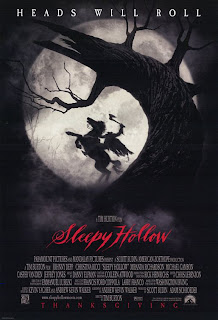Tim Burton
"Heads Will Roll"
Movie Poster
514 x 755
1999
Biography:
He was born August 25, 1958, and is most known for his films, writing, and art. He attracted the attention of Walt Disney's production people and was given an apprenticeship. From there he flourished and produced films such as, "Pee Wee's Big Adventure," "Beetle Juice," "Batman," "Edward Scissorhands," "Sleepy Hollow," and more recently "Dark Shadows." He is now currently married to Helen Bonham Carter and have Two children. He's won many awards, for example, "The Golden Globe," and even an "Emmy." He is still alive and producing many forms of art.
Artist's Statement:
Robert Adam's said this about Burton's art, "Tim Burton's career is the ultimate revenge of the art nerd. Mr Burton, the self-professed alienated child of a dysfunctional family in Burbank, CA., who funneled his loneliness, pain and grief into drawing cartoons, has found fame, and fortune by telling cinematic tales..."
(Art Review of Tim Burton, "A World Of Macabre Misfits.")
Background Information:
The piece of Art, "Heads Will Roll," was a movie poster for Burton's movie "Sleepy Hollow." It was based as an American period horror film. The art in this movie is incredible and he used "Monochrome" Saturation and dark colors to represent Death and Despair. His cinematography skills were put to the test throughout the film. This poster was just a small piece of the art for that project.
Connection:
I enjoy Tim burton's work, it's very dark and appealing to me, it draws your attention in. It's relatable and weird. He's so interesting to me, and he is so talented and constantly working. I feel he really emphasizes death, sadness, loneliness, being different and alone. He usually has a dark theme within his work and he is actually who got me very interested in "Edgar Allen Poe's" work. I choose him because he is perfect for this show, and is very popular and modern in our culture today. His art is even similar to the older artists and their art works of Death and Grief.









